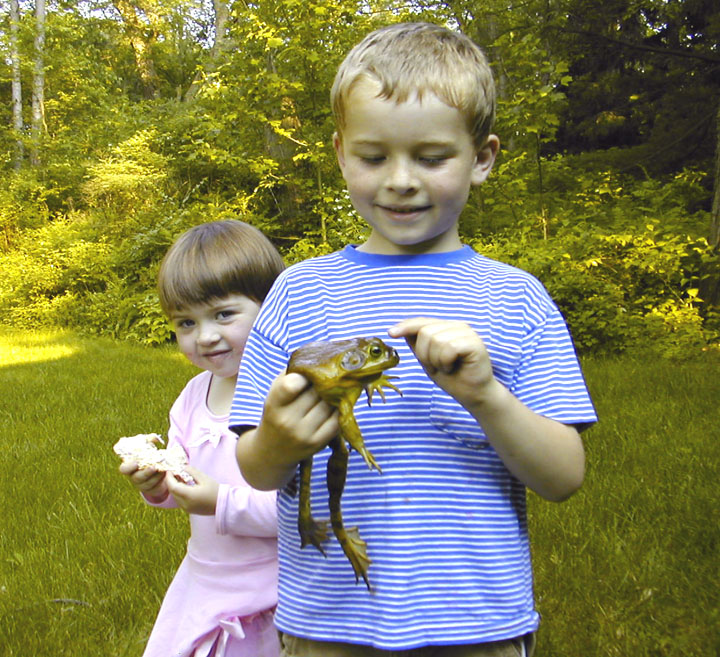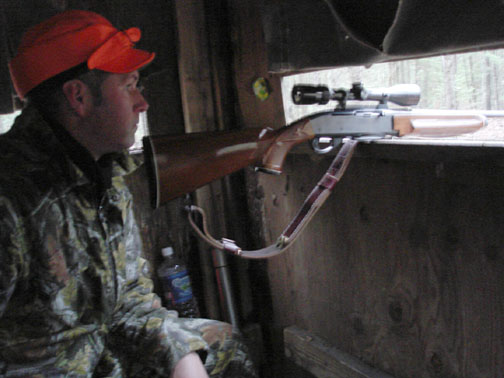Author: by Michael Edelman
[bumped up]
Did you have a BB gun when you were a kid? I didn’t. I wanted one, all right. I wanted a Daisy Model 25 pump like my pal Mike Sarkozy had. But between my Dad, who never forgave Daisy for leaving Michigan and moving to Arkansas, and my Mom, who realized that a BB gun in the city in my hands wasn’t the smartest idea, I never got one. I did get to use my Dad’s old .22 when we went out to the country, so that was some consolation.
Flash ahead to 1980. I’m a poor graduate student living in downtown Detroit, and there aren’t that many shooting opportunities, or at least legal ones, in my neighborhood. I did manage to my kit-built muzzleloader out to Bald Mountain State Park range once a month where I could spend an afternoon practicing for a few pennies worth of powder and shot. Then one day I was at Geake’s Sporting goods buying powder and percussion caps when I spotted an elegant little rifle on the racks between the double guns and .300 Weatherbys. It was a Beeman R7, a very simple and lightweight but very accurate German-made pellet rifle in .177 caliber. Shoots a 7 grain pellet at around 570 fps for an earth-shaking 5 foot pounds of energy, or about what you’d get rolling a baseball off the kitchen table. But it had a sharp looking stock and it was built like a real gun, nothing like the plastic and sheet metal Daisy and Crosman guns.
It was priced like a real gun, too. $125 was a major chunk of change for someone making $6,500/year lecturing to college kids. Obviously there was no way I could justify this. So I bought it, along with some cool looking pellets and a pack of paper targets. A phonebook or a wad of Duxseal in an old cigar box made an adequate bullet trap. I could shoot any time, day or night, and no one was the wiser. I must have shot that rifle every day for the first two years I owned it. Not only was shooting it a great way to unwind from the stress of grad school, it took a lot of small game, too- cockroaches, mice and rats that found their way into my building.
The R7 was a spring-air gun, the most common type of air rifle. It’s the system used in all the classic Daisy BB guns, too. When you cock the gun, you’re pulling a piston in a cylinder back, compressing a spring. Pull the trigger and the piston leaps forward, compressing the air and forcing it through a small hole into the barrel where it propels the BB or pellet downrange. All this happens in a fraction of a second if everything’s working right. It’s a reliable and accurate system; even the little R7 can put 5 pellets into one ragged hole at 15 yards. Use stronger springs and get everything balanced right and you can make a gun that shoots a .22 or .25 caliber pellet at close to 1,000 feet per second for about 30 foot pounds of energy. That’s enough to take medium-sized small game at 50 yards if you’re a good enough shot.
Spring power isn’t the only way to move a pellet. There are a wide variety of guns that use compressed gas to propel a pellet. Some use CO2, from a cartridge or a bulk cylinder, like a paintball gun. Some, referred to as ‘precharged pneumatics’ use compressed air loaded from a SCUBA cylinder and some use muscle power to compress air. These compressed gas guns range from 5 foot/pound target guns used in Olympic competition at 15 meters up to custom made hunting guns firing .50 caliber lead slugs with 200 foot/pounds of energy. That’s nothing new, by the way; guns like these were being made in the 18th century, and Lewis and Clark carried one on their famous expedition.
In fact, the very first pellet gun I ever fired was a compressed air gun, a Sheridan Blue Streak in .20 caliber. Sheridans are the Jeeps of airguns. Rough, rugged and 100% American. They’re multi-stroke pneumatics, which means you keep working the pump handle until you’ve got them to the power level you need. Three pumps and you’ve got a good plinker; ten, and you can take rabbits and squirrels. It’s amazing how many owners of expensive European guns reach for their Sheridan when they go out to harvest small game. And publisher JP owns a Sheridan-the ultimate OYB endorsement.
The basic Blue Streak (or its flashier nickel plated cousin, the Silver Streak) can be had for about $120, but for $60 more you can have your gun modified by Tim MacMurray, of the venerable family shop Mac-1 Airguns, into a more powerful, more efficient piece that compresses more air with each stroke and can take higher pressures, too. A Mac-1 modified Sheridan, with the right pellets, can put out a whopping 30 foot-pounds of energy if you’ve got the muscle power to pack in a dozen strokes. Accuracy isn’t exactly target level, but in the great American industrial tradition, it’s Good Enough for the task at hand. You can even get fancier, if you like and add a Williams peep sight for about $50.
Some people go overboard. A while ago I had the loan of a modified Sheridan with the Williams peep and a $250 Burris pistol scope mounted forward on the barrel-the owner’s pneumatic impression of a Colonel Jeff Cooper scout rifle. The combo worked pretty well, too, but spending over $400 in mods and accessories on a $120 rifle may strike some as excessive. [JP: I use a hand-me-down 3-9x deer rifle scope on my Sheridan. Looks cool, works great!]
I’ve mentioned target shooting and hunting, but one of the most popular airgun sports is a British import called Field Target, in which you shoot at steel animal silhouettes at ranges of 10 to 50 yards. Sounds easy, except the yardage is unknown, and to knock down the target you have to get the pellet inside a hole that’s anywhere from 2′ in diameter down to 3/4′. Not quite as simple as it sounds at first. On my first try I managed to knock down a total of 33 of 60 targets. Kind of humbling.
The nicest thing about field target is that it’s the friendliest competitive sport I’ve ever tried. The first time I showed up at a match, just to see what it was all about, I was encouraged to join in and even offered the loan of a gun to shoot with. Not a junker, either, but an expensive custom gun with a $500 scope. That’s typical of the FT crowd. Not that you need a custom gun. Field Target matches are usually broken into classes for different guns, and there’s a class for standard, unmodified spring piston guns. Plenty of matches have been won with a $150 gun and a cheap Bushnell scope.
There must be a few hundred guns available to buyers these days, ranging from $30 Chinese imports up to multi-kilobuck toys for the truly driven. Most of us fall somewhere in the middle. If this kind of thing interests you check out the Airgun Letter’s website and forum at HYPERLINK – “Sorry link is dead! So removed.”
. Plenty of info and opinions and pointers to guns and smiths around the country.
Oh, and about that Daisy 25 I never got: Enough were sold that they seem to keep popping up at yard sales wherever I go, and Daisy still has spare parts available. I’m up to four so far.



